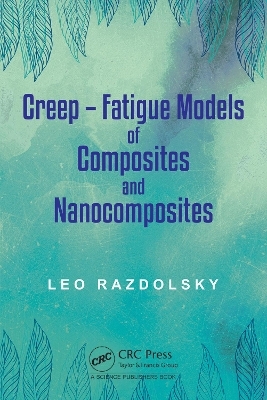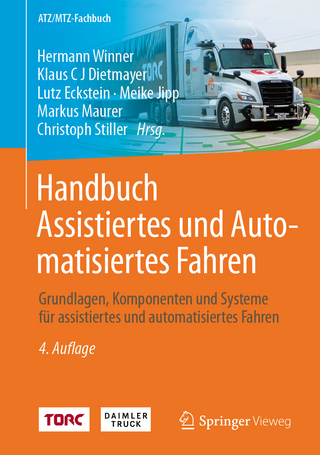
Creep
CRC Press (Verlag)
978-1-032-21302-6 (ISBN)
- Lieferbar (Termin unbekannt)
- Versandkostenfrei innerhalb Deutschlands
- Auch auf Rechnung
- Verfügbarkeit in der Filiale vor Ort prüfen
- Artikel merken
In recent years, the application of composites and nanocomposites has been increasing steadily in industries such as aerospace, automotive, marine, and civil engineering. It is among the most complex and crucial aspects of the mechanics of a deformable solid, due to several specific phenomena and analytic factors arising from cyclic loading. The problems are primarily associated with the development of fatigue damage, and the need to assess the cyclic and structural instability of composite and nanocomposite materials. The study of structural strength under cyclic loading has gained much attention, especially in aircraft manufacturing, power engineering, aviation, and rocket technology. Cyclic loading significantly reduces creep-fatigue lifespan during the entire frequency range. It is clear that characteristics such as endurance limit, static creep limits and long-term static strength will not suffice in the design criteria for fatigue life. New aspects have emerged in high-temperature strength - cyclical creep and long-term cyclic strength, leading to the creation of new methods and means of determining the resistance of composites and nanocomposites materials and continuum damage development under cyclic loading to the creation of appropriate physical models. Particularly relevant is the intensification of creep by high-frequency cyclic loading in composite materials, which usually occurs at high temperatures. Most studies in the field of cyclic creep are experimental, and the direct use of number of cycles to define damage model cannot escape the empirical relation that predicts multi-stress level fatigue life well.
The book presents new phenomenological cyclic creep – fatigue models for describing the fatigue life and behavior of time-dependent composites and nanocomposites. Since the main difference between the creep process from the fatigue process is that from a physical point of view, the first is quasi-static, and the second is dynamic. Therefore, the functions of creep should reflect the oscillatory nature of the fatigue process. The results are supported by step-by-step practical design examples and will be useful for practicing structural engineers, code developers as well as research and university faculty.
Leo Razdolsky has forty-five years of experience in structural engineering. His experience includes material science; computer modeling; composite and nanocomposite structures, power plants and cooling towers. Dr. Razdolsky has been teaching various structural engineering and material science courses at the University of Illinois and Northwestern University. Dr. Razdolsky is currently an independent researcher conducting research work connected with high temperature creep of composite structural elements and systems. He is the author of four books in this area of expertise.
Introduction and Assumptions. Cumulative Damage Model (CDM) of cyclic creep – fatigue process. Phenomenological Creep – Fatigue Models. Peculiarities of Phenomenological Models of Nanocomposites. Probabilistic Approach of Creep – Fatigue Models.
| Erscheinungsdatum | 21.03.2023 |
|---|---|
| Zusatzinfo | 29 Tables, black and white; 52 Line drawings, black and white; 52 Illustrations, black and white |
| Verlagsort | London |
| Sprache | englisch |
| Maße | 156 x 234 mm |
| Themenwelt | Technik ► Fahrzeugbau / Schiffbau |
| Technik ► Maschinenbau | |
| ISBN-10 | 1-032-21302-7 / 1032213027 |
| ISBN-13 | 978-1-032-21302-6 / 9781032213026 |
| Zustand | Neuware |
| Haben Sie eine Frage zum Produkt? |
aus dem Bereich


